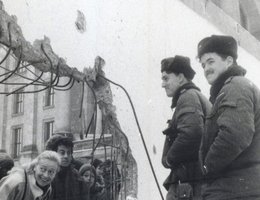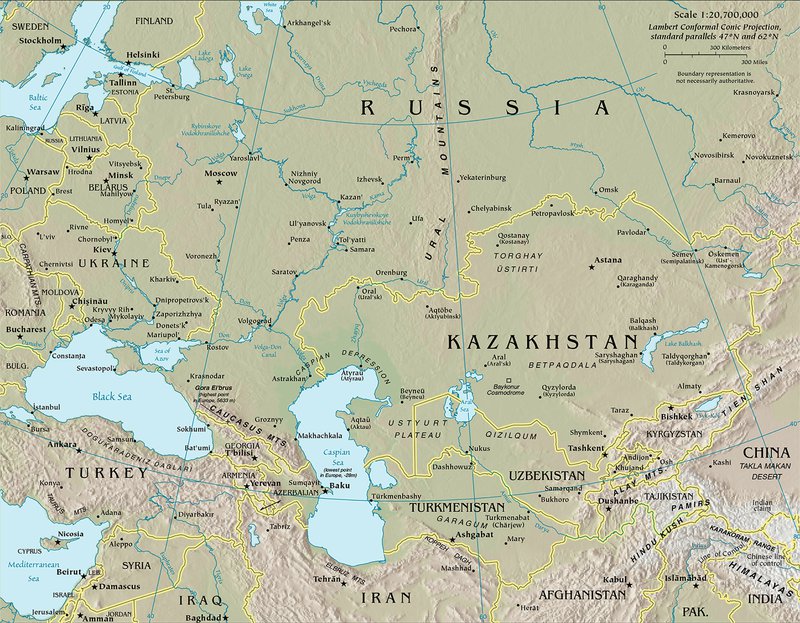In the late 1980s, the Cold War came to a dramatic end. The economies of nations behind the Iron Curtain were in trouble. People in East Germany, for instance, could see the prosperity and wealth of their West German neighbors. In Russia, there were long lines of people waiting to buy food. They had to have coupons from the government just to buy socks. Some historians believe that the trillions of dollars that both the U.S. and the U.S.S.R. spent on nuclear arms and conventional armies had caused the problems in Russia. There was also a lot of pent up demand for freedom in the citizens living behind the Iron Curtain.
These forces came to a head in the 1980s. Russia responded by electing Mikhail Gorbachev as the leader of the U.S.S.R. The new leader decided to loosen the repression on liberties that the old governments had used to keep people in line. The new leaders found they couldn’t control the desires of their people and those in Iron Curtain countries.
When Russia showed they would no longer interfere in Eastern Euorope, the Berlin Wall was destroyed.
- 1985 — Gorbachev comes to power.
- 1987 — Reagan and Gorbachev sign the Intermediate-range Nuclear Forces Treaty (INF) in Washington. It removes more than 2,600 medium-range nuclear missiles from Europe.
- March 1989 — Hungary decides to allow free elections and take down the fence between Hungary and Austria. Gorbachev says he will not stop the moves.
- June 1989 — Poland holds its first free elections. The Solidarity (labor) Party beats the Communists.
- July 1989 — Thousands of East Germans "vacation" in Hungary and then flee to the Austria and the West.
- October 1989 — East German leaders celebrate the 40th anniversary of the founding of the Communist GDR. Two days later, 70,000 protesters demand an end to the regime. Russian troops stay in their barracks and GDR soldiers and police back down. Communist leader Honecker is voted out of office by the Politburo.
- November 1989 — Soldiers in East Berlin open some of the gates in the Berlin Wall. Crowds respond by tearing the wall down.
- November 1989 — Bugaria’s communist party leader resigns. Free elections held in June, 1990.
- December 1989 — Protesters in Czechoslovakia jangle keys in front of the government saying, "Your time is up." The government gives up without violence, and elections are held.
- December 1989 — Romanian communist forces kill 73 in riots. Crowds storm the government and later capture the leader Ceausescu. He and his wife are tried and executed. Elections are held.
- June 1991 — In Yugoslavia, the provinces of Croatia and Slovenia declare their independence igniting a decade of fighting and genocide. Eventually, the country splits into Serbia, Slovenia, Croatia, Bosnia, Herzegovina, and the region of Kosovo.August 1991 — Russian military leaders put Gorbachev under house arrest and take over governing in order to save the Soviet Union. Boris Yeltsin, leader of the Russian Republic, occupies the Parliament building, defying the coup. The Army backs down.December 1991 — The republics of Russia, Belarus, and Ukraine act to dissolve the Soviet Union, finally freeing Estonia, Latvia, Lithuania, Belarus, Ukraine, Georgia, Moldova, Armenia, Azerbaijan, Turkmenistan, Uzbekistan, Tajikistan, Kyrgyzstan, and Kazakhstan.



